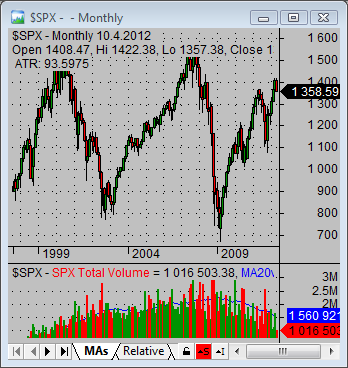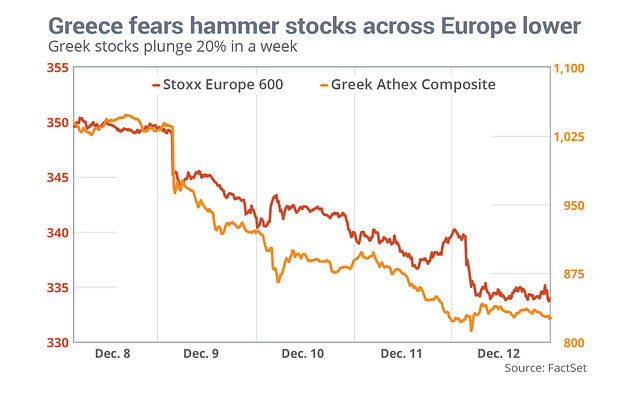How Stock Market Indexes Changed Investing
Post on: 30 Май, 2015 No Comment

When people talk about the market going up or down, showing a strong performance or a weak one, or turning bull or bear. they are referring to the market as seen through the lens of indexes.
Indexes work like a summary of the market by tracking the top stocks within a market. As one of the biggest factors in the performance of stocks is the health of the market, it is hard to believe that indexes have been around for less than half the history of stock exchanges. In this article we will look at the history of these investment vehicles.
Before the Dow
The stock market’s reputation has seen highs and lows throughout its history. Its lowest point is best shown in the years following the crash in 1929 because it destroyed the value of so many people’s investments.
The first 120 years of the New York Stock Exchange has to rank as the second worst low for the Dow. The mistrust of the market during this time was not as intense, but it was much more sustained. The main reason behind this low was that people involved in the market were speculating rather than investing. This wasn’t entirely their fault as regulations were quite loose and whatever information you could get wasn’t guaranteed to be accurate or even truthful. This, coupled with the vulture-like dealers and brokers who circled around Wall Street waiting for investors they could exploit, made the markets more volatile. There were many honest brokers, companies and dealers, but there was nothing to stem the tide of fraud flowing from the less scrupulous ones. (To read more about the NYSE, check out What is history behind the opening and closing bells on the NYSE? )
Less recognized, but equally important, was the fact that people didn’t understand the market or its fractions and points. The idea of a market was still one of stalls where you could browse farmers’ produce and buy your groceries. The idea of buying the performance of a company was difficult for 17th and early-18th century Americans to grasp.
Remember that most adults of this time had spent their childhoods in mines, factories and fields rather than schools. Even the elite who were involved in the market didn’t fully understand it in some cases. They understood that it went through periodic ups and downs in the same vague way that a person in the hold of a ship can guess whether it is at sea or in port by the motion, but still have no idea of the size or frequency of the waves they’ll encounter. Without this information, buying a stock when it was overpriced or underpriced was mostly a matter of luck.
Sticks in the Sand
Charles H. Dow, a finance journalist, unveiled the first stock index in 1896. His Dow Jones Industrial Average was an average of the top 12 stocks in the market. As this was just at the tail end of the industrial revolution, the majority of these companies were in the industrial sector (steel mills, railroads, mining, etc.). He calculated the DJIA by taking all of the stock prices, adding them together and then dividing them by the number of stocks. The number that came out of this equation on May 26, 1896, was 40.94. The range of the Dow has since been expanded. (For more insight, read Dow Theory .)
Dow thought of his average as a measure of the market’s tide. Through his calculations, he was basically placing a stick at the high water mark of each wave, or trading day. If the waves kept pushing him and his stick up the beach, then the tide was rising. If he had to walk out farther each time to pick up the stick, then the tide was receding. Armed with this measure, Dow was able to see whether the market rose for a consecutive period, as with a bull market, or if it regularly fell, as with a bear market.
Dow started the Railroad Average in 1884 (now the Dow Jones Transportation Average ) and the Utility Average in 1929. In 1928, it became necessary to switch the method of calculating the Dow indexes because companies were doing mergers and stock splits that warped the numbers. The Dow switched to a system of flexible divisors that change in order to keep the average from distorting from these and other complications. In this form, the DJIA is still around in 2007, but the 30 companies that make it up have much less concentration in the industrial sector. The name, however, has stuck.
S&P 500
Standard & Poor’s 500 traces its roots to 1860, when Henry Varnum Poor published History of the Railroads and Canals of the United States. Rather than being a literal history of the railroad, it was the first financial history of all the companies laying track or digging canals in the United States. Poor hoped that his book would help get information to investors outside the banking district. Its success led him to publish the Manual of the Railroads of the United States on an annual basis.
The rate at which Poor’s publications sold out encouraged other companies like Standard Statistics and Moody’s Manual Co. to broaden their operations beyond just railroad stocks. These three firms underwent a slow series of mergers from 1913-1941. During this process, Standard Statistics started keeping an index of 223 stocks in different sectors of the market, but had to reduce it to 90 because there was no machine or person who could match the computing challenge of updating an index containing so many companies. One of the things that distinguished this index from the more popular DJIA was the fact that it was a market-weighted average rather than price-based like the Dow. This meant that the bigger companies didn’t sway the 90 as much as the top companies in the Dow did the DJIA. This more accurate measure of the overall market was not fully appreciated until much later.
Poor’s company went bankrupt after the 1929 crash and was absorbed into Standard Statistics on gracious terms. The newly formed Standard & Poor’s 90 Index, merely a renaming of the Standard Statistics 1926 index, was the only index that was computed daily. In 1946, Standard & Poor bought a punch card computer from IBM and was suddenly able to expand the index to 500 companies, which could be updated hourly.

See the Tech Stocks Run
In 1985, the Nasdaq introduced its own index to compete with the S&P. The Nasdaq 100 was designed as a market-weighted index that contained more companies from the technology sector — largely unmapped territory at the time. The Nasdaq itself was designed to market these stocks and it had been steadily growing in power as both the computer and the internet brought technology into people’s homes.
The popularity of technology during the 1980s and ’90s earned the Nasdaq 100 the third spot on the financial news reports. This increased exposure caused more investors to flock to the inflating bubble in the late ’90s and, consequently, increased the damage from the tech crash. Despite its unfortunate role in the crash (and thanks to an increasingly technologically dependent world), the Nasdaq 100 continues to earn its place as one of the premier indexes in the world. (To learn more about the Nasdaq, see The Tale Of Two Exchanges: NYSE And Nasdaq and Getting to Know Stock Exchanges .)
Indexes Galore
In addition to the Dow, the S&P and Nasdaq indexes, there are hundreds of other indexes. Index funds and the passive investors who love them have encouraged the creation of an increasing number of these market-tracking tools.
The most popular after the top three are:
Sector-specific investors also have a smorgasbord of indexes to choose from.
This glut of information is largely due to improvements in disclosure. computation and, of course, the internet. Computation in particular has allowed statisticians to take as wide or narrow a swath of stocks as they please and to get the updated figures every few seconds for recalculation. The rapidity of the data and the analyses that can be conducted with it were unthinkable even 30 years ago.














